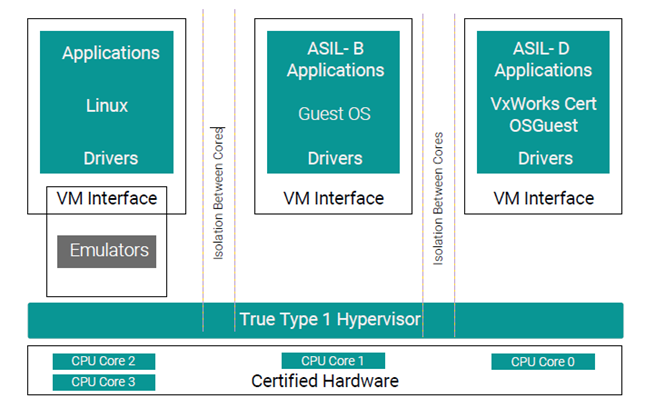
The Importance of Consolidation and Virtualization for the Software-Defined Vehicle
Over the years, our phones have become smartphones, our homes have become smart homes and, soon, we’ll all be driving smart cars. This trend toward more “intelligent” machines is the result of recent advances in wireless communications, hardware advances, and software development and delivery that allow manufacturing companies to package more automation and real-time intelligence into increasingly smaller spaces. With the rise of electric vehicles, autonomous driving, and connected car technologies, today’s vehicles are rapidly evolving from purely mechanical modes of transportation to sophisticated, software-defined vehicles. And this means that software companies now have a critical role to play in the way that the vehicles of the future are designed, developed, and operated.
As any car enthusiast knows, automobiles are complex systems of interdependent (and often independently manufactured) parts. Every fixed-function component in a car adds complexity to manufacturing, supply chains, maintenance/repair, and automotive software—all of which creates a barrier to innovation. A car may have hundreds of electronic control units (ECUs), for example, each unit responsible for controlling a specific function related to engine management, braking, infotainment, or something else. In order to minimize complexity and accelerate the evolution of software-defined vehicles, the automotive industry (in tandem with hardware and software companies) have begun to consolidate these discreet ECUs onto a small number of on-board, high-performance computing (HPC) systems.
Consolidation is key to the car’s evolution
Electric engines, advanced driving assistance systems (ADAS), and increasingly sophisticated infotainment systems all require large amounts of computational power to run smoothly and reliably. At the same time, these systems need to maintain constant connectivity for real-time road intelligence, communications, safety, and software updates. Packaging all this technology into a high-performance vehicle requires automotive manufacturers to rethink how they design their cars, from hardware components to the wiring harnesses that connect them. Aptiv’s Smart Vehicle Architecture and Wind River’s software solution is an excellent example of how technology companies are driving alongside the automotive industry to help improve smart car designs for the future.
Consolidation is key to building the smart vehicles of the future. Think of it as cars doing more with fewer components. One way to consolidate components is through virtualization, which reduces the amount of discrete on-board hardware needed by allowing multiple software applications, and for different automotive subsystems to run on a single HPC system while still being managed independently. In a virtualized architecture, there also needs to be support for mixed-criticality systems, which ensures that safety-critical applications such as autonomous driving functions are logically isolated and protected from non-critical or potentially vulnerable software modules.
Virtualization as an onramp to innovation

Wind River VxWorks—a safety-certified, real-time operating system—Wind River Linux, and Wind River Helix Virtualization Platform are built to solve these challenges for mission-critical applications such as planes, trains, and, yes, automobiles. Helix Virtualization Platform, shown above, delivers a safety-certifiable multicore virtualization platform that supports mixed-criticality systems. At the same time, automotive manufacturers can safely deploy ADAS applications on VxWorks while running their infotainment applications on Wind River Linux, Android, or other operating systems. And, importantly, they can run all these applications on the same HPC hardware without compromising performance or security.
Wind River and Aptiv are working together to pre-integrate and validate their solutions around a common architecture and help customers speed up development, deployment and operations.
Next-generation software-defined automotive platforms are set to revolutionize the industry. Through the consolidation of hardware, virtualization, and mixed-criticality capabilities, cars are becoming more connected, efficient, and intelligent. In future blog posts, we’ll look at how continuous integration/delivery (CI/CD), cloud-native system simulation, testing and validation approaches, security regulations and certifications, containerization, low-latency 5G connectivity, Level 3 ADAS, and other trends are driving innovation across the industry.
If you’re interested in learning more about how Wind River can help your business navigate this complex journey, contact us.
About the author:
Ram Subramanian is a Senior Product Line Manager at Wind River

